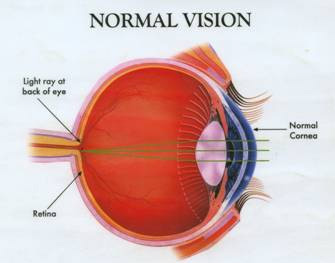Prematurity – A Risk factor for Eye Problems
What problems may occur in premature infants?
 Today with well trained Neonatologists in our country, very small babies & low birth weight babies are surviving, bringing cheers to their parents. However, they also bring along with them a host of new eye diseases, which were uncommon in the past. Not all premature babies develop ROP & other eye problems, but incidence is much higher in these infants.
Today with well trained Neonatologists in our country, very small babies & low birth weight babies are surviving, bringing cheers to their parents. However, they also bring along with them a host of new eye diseases, which were uncommon in the past. Not all premature babies develop ROP & other eye problems, but incidence is much higher in these infants.
The common eye problems seen in preterm infants are
- ROP or Retinopathy of Prematurity
- Refractive errors such as short sight & Astigmatism, which blur the vision & may need glasses
- Amblyopia or lazy eye
- Squints are seen more often in preterm babies & may lead to lazy eye
- Retinal detachments later in life
What is ROP?
ROP or Retinopathy of prematurity is a condition which affects preterm infants ( born before the due date more so before 32 weeks after gestation) or with a low birth weight less than 1500 gms.
How does ROP develop?
Our eye works like a camera. There is a lens in the front and a film at the back. The film is called Retina. Retina will convert light rays into electric impulses & transmit the information to the brain via the optic nerve.
The structure of the eye starts to develop at about 16 weeks of pregnancy. The blood vessels in the retina develop from the centre, near the optic nerve & proceed towards the periphery. During the last 12 weeks of a pregnancy, the eye develops rapidly. When a baby is born full-term, the retinal blood vessel growth is mostly complete (The retina usually finishes growing a few weeks to a month after birth). But if a baby is born prematurely, before these blood vessels have reached the edges of the retina, normal vessel growth may stop. The edges of the retina—the periphery—may not get enough oxygen and nutrients.
The periphery of the retina then sends out signals to other areas of the retina for nourishment. As a result, new abnormal vessels begin to grow. These new blood vessels are fragile and weak and can bleed, leading to retinal scarring. When these scars shrink, they pull on the retina, causing it to detach from the back of the eye. This is called as Retinopathy of Prematurity.
Are there any other Risk factors for ROP?
Other than prematurity & low birth weight, may other factors have been implicated for ROP. Severe respiratory distress, anemia, repeated blood transfusions, prolonged course in the incubator, Excessive use of oxygen are a few of the factors which may contribute to the development of ROP.
What happens if this is not recognized?
If not recognized & treated early enough, ROP can lead to detachment of the retina & total permanent blindness.
What Treatment modalities are available for ROP?
Not all ROP need treatment. In most cases, it could be a very mild form which just requires a careful follow up to look for complications. However if new vessels do form, the most effective treatment involves use of Laser.
Laser treatment works by burning that part of the retina, which has no blood supply & thereby reducing the oxygen demand. This leads to regression of new vessels. Very rarely surgical intervention may be needed if the retina has got detached or if there is bleeding inside the eye. If the condition is not recognized early, treatment may not work & the child may lose vision permanently.
Thus, anyone who was born premature or was treated for ROP as an infant should see an eye doctor frequently during childhood and at regular intervals throughout life. Furthermore, because careful screening for ROP is a relatively recent practice, adults who know that they were born prematurely and don't know whether they had ROP also should have regular eye exams, to detect and receive prompt treatment for any late-onset complications of ROP that may threaten their vision.

